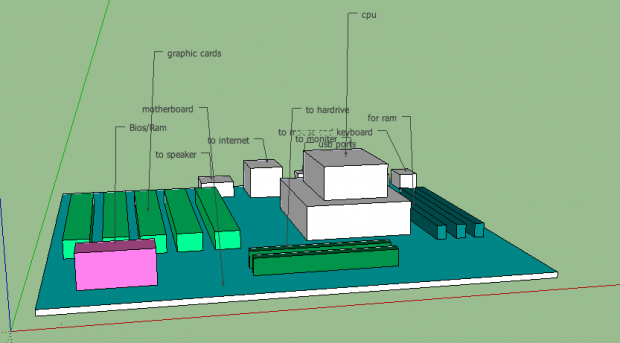
By Sheena Vaidyanathan
Have you ever looked inside a laptop? Have you ever held a CPU or studied the components on a computer motherboard? Though we use computers everyday, many of us know little about the fascinating world inside.
In the spirit of tech innovation that's defined Silicon Valley, every sixth grader in the Los Altos School District will be able to describe what goes on inside a computer. Students spend several classes studying a computer motherboard, drawing it in their notebooks and creating a 3D model of the computer on the computer. This hardware lesson is part of a required weekly class in a program that teaches science, technology, engineering and math (STEM) with a focus on creativity, collaboration and computer science.
Along with computer hardware, students learn the art of drawing from observation; the ability to simplify what is complex. Students use their pencil drawings to create a 3D model on the computer using Google SketchUp, a free application. Using the tool is not exactly new to these students -- they used it to create 3D models of houses in a digital design class in the fifth grade.
Students are encouraged to use their own interpretation and creativity in designing the 3D model. They don't have to make it look exactly like the original, and can create their own work style. Some quickly make blocks and label them; others go back several times to the physical motherboard in the classroom to re-check the drawing and count out the exact number of components and relative sizes. The completed models are colored, labeled and then exported to a 2D image so they can be added to the student's Google site as part of their e-Portfolio for the class. (Check out their samples here.)
Besides this computer hardware lesson, students learn vector graphics, binary numbers, computer programming, and how to post onto their Google sites. They work in teams to create video games using Scratch, a programming language from MIT.

